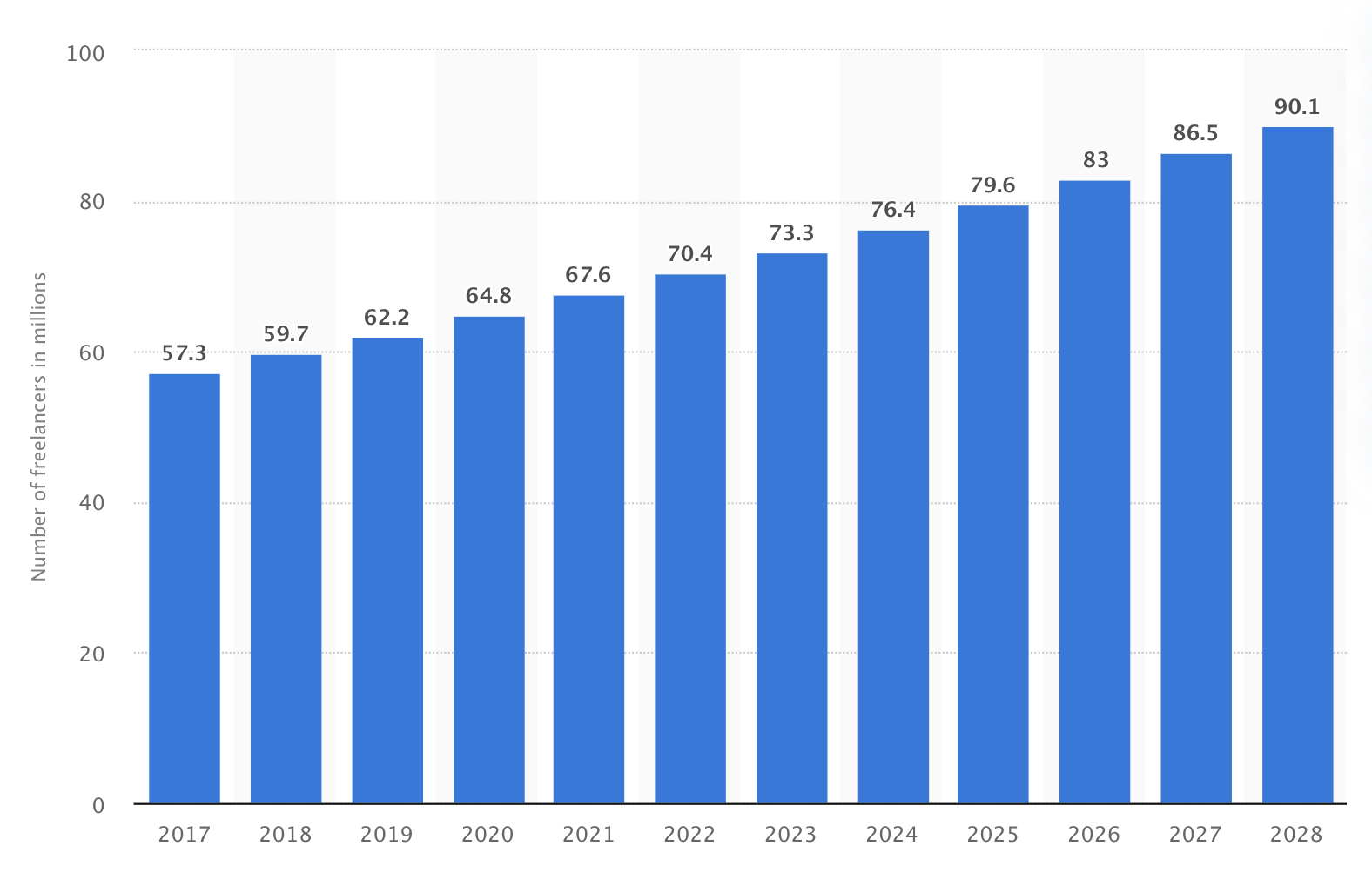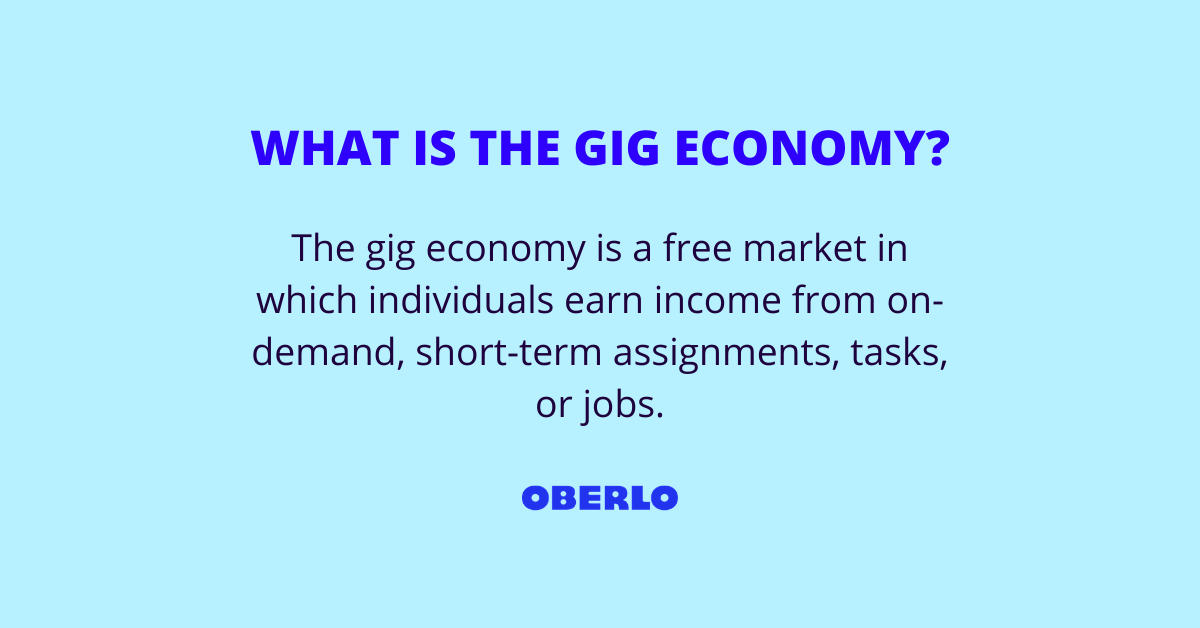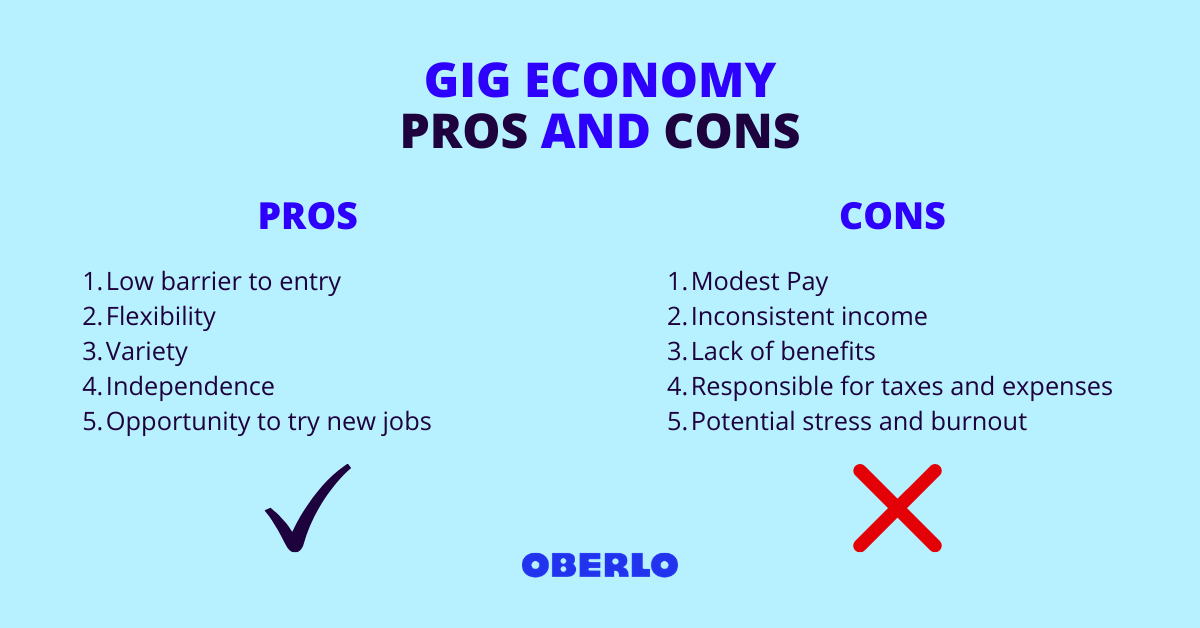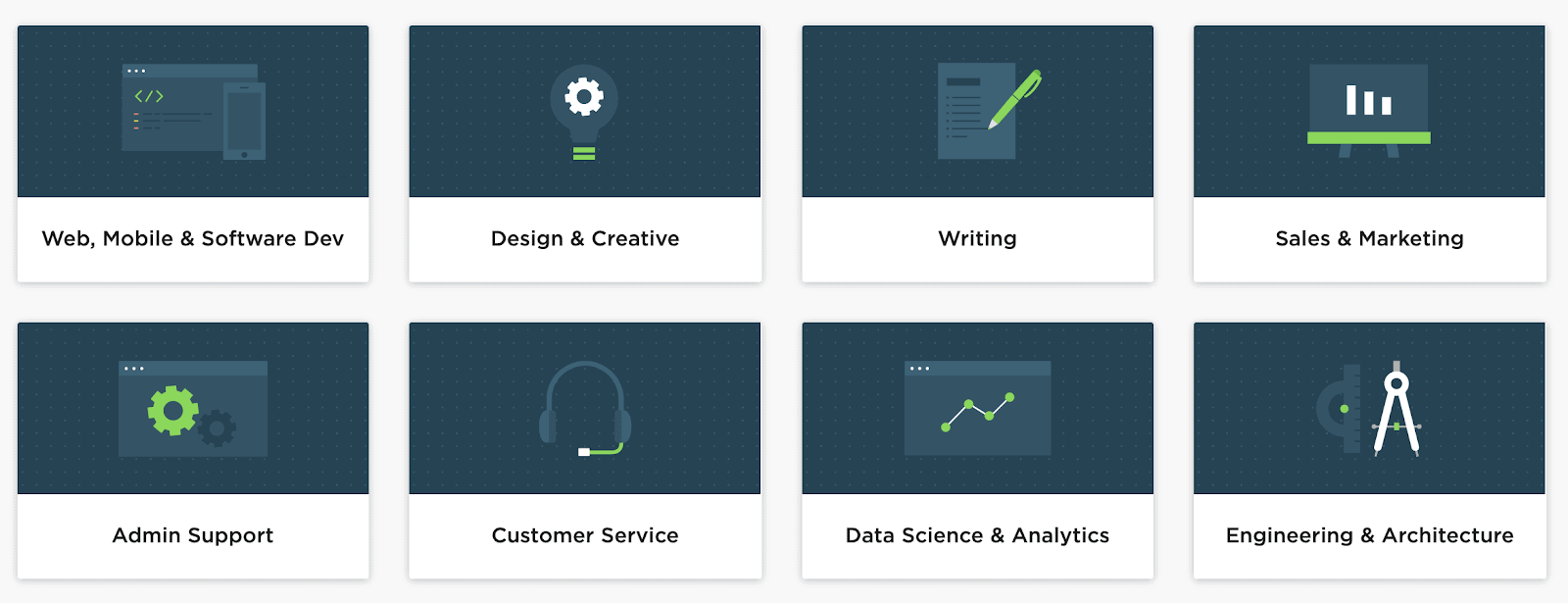What is the gig economy, and how does it work? This question is becoming increasingly important and relevant.
According to Statista, it’s projected that 85.6 million people will be freelancing in the United States by 2027. As a result, freelancers will make up a whopping 50.9 percent – over half – of the U.S. workforce.

When you hear the term ‘gig economy,’ you may think of companies like Uber and Upwork. However, the gig economy encompasses a lot more than these platforms.
In this article, we’ll explore how the gig economy works, the types of gig workers, and the pros and cons of gig work.
So, if you’re looking for ways to make money in the gig economy, read on.
What is the Gig Economy?

What does ‘gig economy’ mean? The gig economy is a free market in which individuals earn income from on-demand, short-term assignments, tasks, or jobs. Often, gig economy workers find jobs through online platforms or apps.
→ Click Here to Launch Your Online Business with Shopify
Gig economy workers aren’t employees, but self-employed independent contract workers – often working for a variety of clients. This type of work has been around for a long time – however, the name has evolved.
The term ‘gig’ originates from the world of performing arts, where comedians, musicians, and performers are paid for individual performances, called ‘gigs.’
Types of Gig Workers
The gig economy definition encompasses many different types of gig workers, spanning virtually every industry.
Some popular gig economy jobs are relatively new, and others have been around since the dawn of commerce. Here’s a list of the different types of gig workers:
- Freelancers: Perform services for multiple clients
- Consultants: Provide guidance to clients
- Independent contractors: Appear similar to traditional employees, but are independent
- Temps: Temporary independent contract workers
- Seasonal workers: Provide temporary services as independent contractors
What is a Gig Worker?
A gig worker earns money from completing lots of small jobs for a number of clients. These clients can be individuals or businesses.
Gig work varies greatly and includes everything from running errands to programming. Once a gig worker has completed a job, they’ll move onto the next project.
Some gig economy workers earn money per hour, and others make money per project or task. If a gig worker earns money per hour, they’re often able to choose when and how long they work.
Many gig workers also have a full-time or part-time job, and do gig work to earn additional income on the side.
10 of the Best Gig Economy Jobs
There are countless different types of gig economy jobs. Here’s a quick rundown of 10 gig economy examples to illustrate the opportunities available.
1. Ridesharing and Taxi Driving
All you need to apply for ridesharing apps like Lyft and Uber is a smartphone and car. If you qualify, you can start earning money on the side in no time.
2. Education and Training
Many teachers, tutors, and instructors work as individual contractors who provide education to multiple clients.
3. Deliveries
Like ridesharing apps, there’s a host of food and parcel delivery apps such as Postmates and Grubhub. Gig workers use bikes, motorbikes, cars, and vans to make deliveries.
4. Administrative
Administrative jobs are popular in the gig economy. For example, many people work as virtual assistants, completing tasks for a number of different clients.
5. Software Development
Software developers often work as independent contractors and consultants, helping small businesses to make websites, software, apps, and games.
6. Accounting and Finance
Plenty of gig workers perform accounting and finance based tasks for clients, such as bookkeeping and tax return preparation.
7. Digital Marketing
There are many different digital marketing jobs in the gig economy, from running Facebook ads to performing search engine optimization (SEO).
8. Project Management
Project managers are used in many different industries to oversee and direct projects from start to finish.
9. Writing
There are many freelance writing jobs in the gig economy. These can range from creating advertising copy to improving CVs.
10. Event Staffing Jobs
Many event planners need temporary workers for parties, weddings, conferences, and more.
Working in the Gig Economy: Pros and Cons

The gig economy has a number of benefits that traditional work doesn’t typically enjoy. However, there are also some key downsides.
Let’s take a closer look at some gig economy pros and cons.
5 Gig Economy Benefits
Let’s begin with five gig economy benefits.
1. Low Barrier to Entry
It’s very easy to join the gig economy. There are many gig economy jobs that are simple and don’t require qualifications or previous experience.
2. Flexibility
Gig economy workers have the opportunity to choose when they work and the clients they take on (or don’t take on). As a result, many gig economy workers choose to work from home.
3. Variety
Gig economy workers often perform many jobs for different clients, which can help to stave off monotony and keep work interesting.
4. Independence
Gig economy workers are self-employed. In other words, a gig worker is her own boss. As a result, most gig workers don’t have to attend meetings, progress reviews, or deal with office gossip and drama.
5. Opportunity to Try New Jobs
Many people have a small business idea they’d like to try, but it doesn’t make sense to quit their main source of income to give it a go. Working in the gig economy is a great way to try different jobs on the side with minimal risk.
5 Gig Economy Drawbacks
Unfortunately, there are drawbacks to every job. Here are five disadvantages to working in the gig economy.
1. Modest Pay
Although many gig economy workers earn good money from gig work, it can be challenging to create a sizable income from bite-sized jobs. This is especially the case for unskilled work, like delivery driving or grocery shopping.
2. Inconsistent Income
A flexible schedule also comes with a flexible income. Gig economy workers often experience fluctuations in their income, depending on the amount of work available.
3. Lack of Benefits
Without an employer to provide benefits, self-employed individuals are responsible for their health insurance and retirement plan.
4. Taxes and Expenses
Self-employed individuals also need to manage and pay taxes on the money they earn from gig work. Plus, gig economy workers usually need to purchase and maintain the tools and equipment they need, such as cars, computers, smartphones, and phone plans.
5. Potential Stress and Burnout
Working in the gig economy can be tiring and stressful. Managing many jobs and clients isn’t for everyone. And it can be stressful not knowing when your next job will arrive.
7 Gig Economy Platforms to Find Online Work

Wondering how to join the gig economy? Here are seven of the best gig economy platforms to find online jobs:
- Upwork: Gig economy jobs for freelancers (featured in the image below)
- Freelancer: Another general freelancing platform
- Fiverr: Designed for bite-sized gig work – many jobs pay a ‘Fiverr’!
- Fancy Hands: Virtual assistant gig economy jobs
- FlexJobs: Find online jobs with reputable companies
- Guru: Gig economy jobs for experienced gig workers
- Toptal: A gig economy platform connecting the ‘top 3%’ of freelancers with businesses
12 of the Best Gig Economy Apps to Find In-Person Work
Prefer to avoid computers and work in-person? Here are 11 of the best gig economy apps to find work:
- Uber: Become a modern-day taxi driver
- Lyft: Another ridesharing app like Uber
- Instacart: Shop for groceries and deliver them to clients
- Amazon Flex: Deliver parcels
- Postmates: A complete delivery service app
- WAG: Make money by walking other people’s dogs
- TaskRabbit: Find a variety of gig work, such as shopping and home repairs
- Handy: Earn money from tasks like cleaning and furniture assembly
- Dolly: Help people move houses
- Uber Eats: Pick up and deliver food
- Grubhub: Another food delivery app
- DoorDash: Another app for food delivery (featured in the image below)
Summary: What is the Gig Economy?
The gig economy provides plenty of opportunities to earn extra money from small, on-demand jobs.
Gig work has been around for a long time under different names. There are many different types of gig workers, such as freelancers, consultants, independent contractors, and temps.
Gig economy workers can experience low pay and inconsistent income. Plus, they’re responsible for their taxes, benefits, and expenses.
However, gig economy jobs offer plenty of flexibility and independence, and they typically have a low barrier to entry.
So, if you’re looking to make some money on the side, consider becoming a gig economy worker today!






